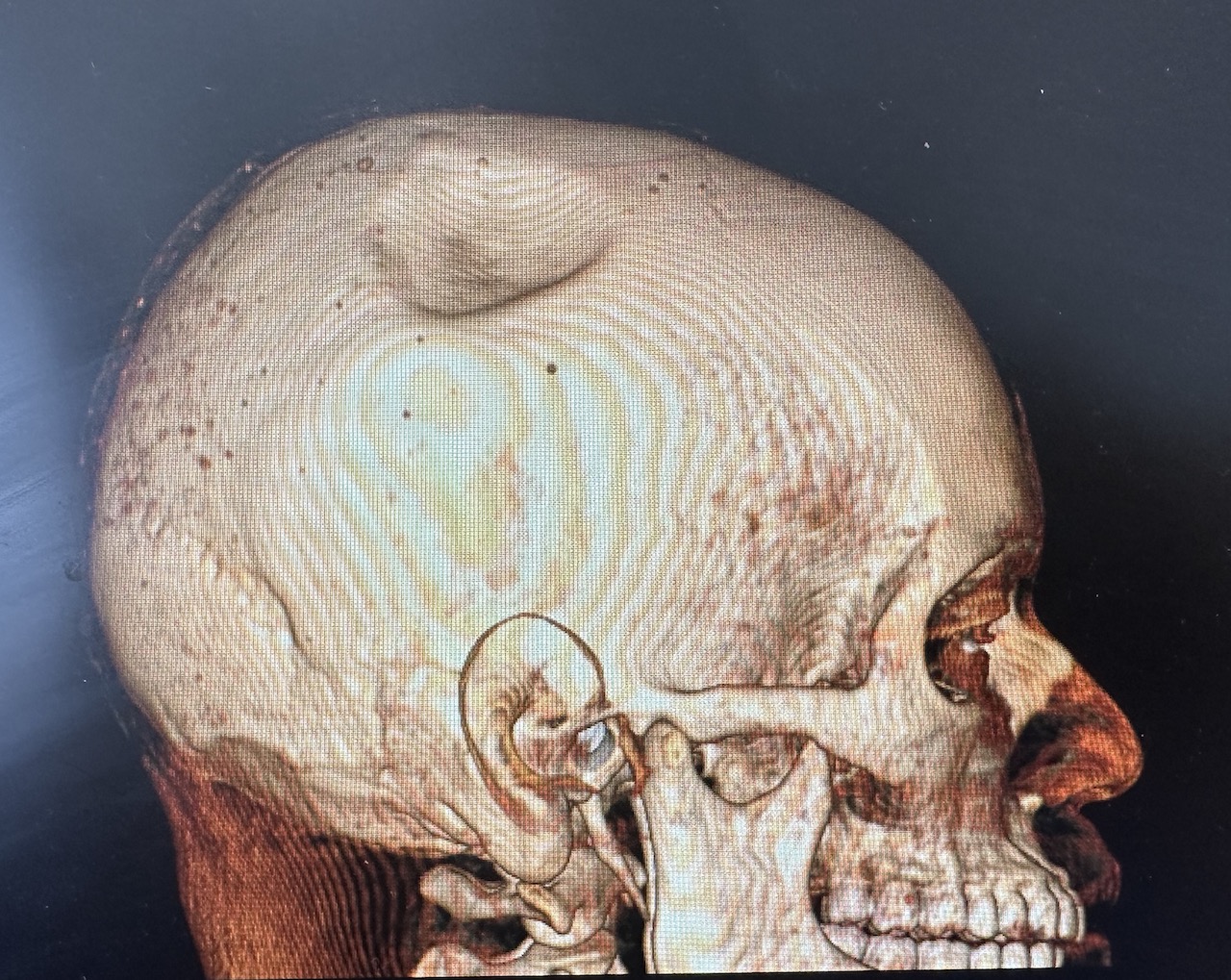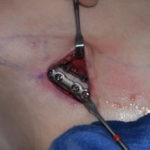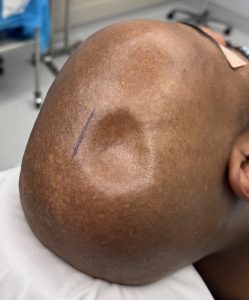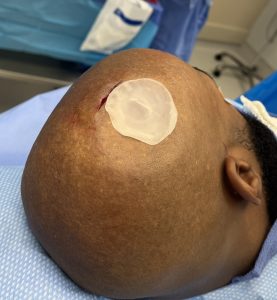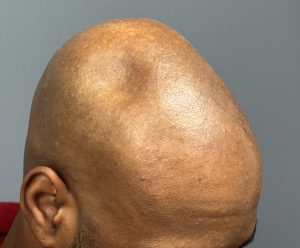Background
Congenital skull indentations are distinct depressions in the skull present at birth. They are most commonly partial-thickness defects rather than full-thickness bone deformities. The most likely cause is prolonged intrauterine pressure from structures such as the maternal sacral promontory, rib cage, or even the fetus’s own foot or hand. Although birth trauma (e.g., forceps or suction-assisted delivery) can also cause such dents, in the absence of a trauma history, intrauterine compression is the most plausible explanation. The skull develops around the persistent source of pressure, leaving a depression in the surrounding bone.
Patients are often aware of the skull dent from a young age. However, as long as hair coverage is present, it rarely poses an aesthetic concern. For men, thinning hair or shaving the head can make the defect highly visible. A 3D CT scan can confirm the extent and depth of the indentation. From a contouring standpoint, such defects are highly correctable, with treatment options including bone cements or custom-designed implants.
Case Study
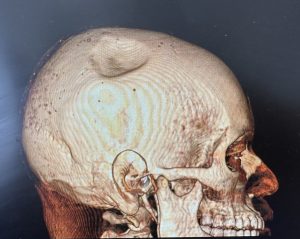
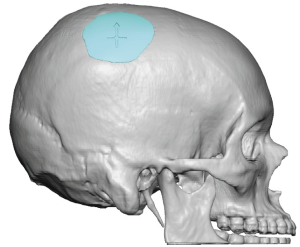
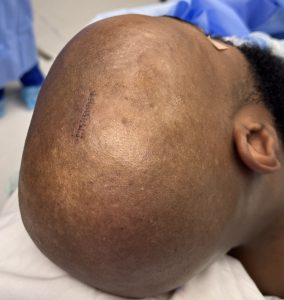
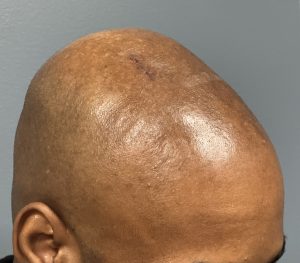
Discussion
Although the origins of congenital circular skull indentations remain uncertain, their correction is straightforward. Modern imaging and custom implant technology allow for highly accurate contour restoration. The procedure is efficient, typically taking one hour or less, and provides a lasting solution to a lifelong cosmetic head shape concern.
Conclusions
- Congenital circular skull dents are rare, particularly in the absence of birth trauma.
- Custom skull implants offer an effective method to eliminate the appearance of partial-thickness defects.
- These implants can be placed through remarkably small scalp incisions.
Barry Eppley, MD, DMD
World-Renowned Plastic Surgeon

